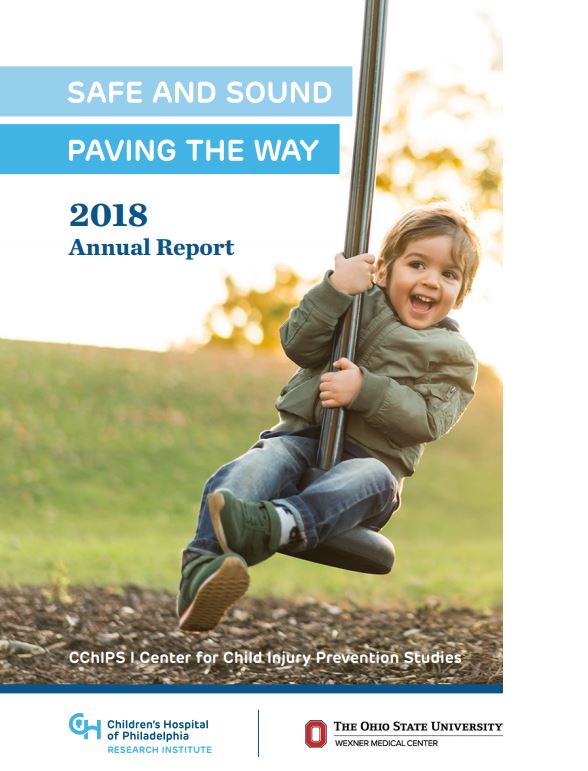Published on:
Protecting children from injury – recent studies
 The Center for Child Injury Prevention Studies (CChIPS) just released a compilation of their 10 most recent projects in their 2018 annual report. Here is a summary of their area of studies and findings:
The Center for Child Injury Prevention Studies (CChIPS) just released a compilation of their 10 most recent projects in their 2018 annual report. Here is a summary of their area of studies and findings:
- Some recent studies are questioning if it may actually be safer for a child to be seated in a proper restraint system in the front passenger seat rather that in the back seat. The CChIPS conducted crash test studies with a child human body model called the PIPER. They found out that a six year old child seated in a high-back booster and forward-facing Child Restraint Seat (CRS) in the front passenger seating position was better protected from injuries in cars equipped with modern passenger airbags rather than cars with no airbags. These findings go against the common belief that airbags are dangerous for children. Additional tests are needed to validate these findings.
- Which booster seat design is best at protecting children from injury? Where should the belt be positioned? Would the addition of curtain airbag help prevent injuries in a car accident?
- More and more airplanes feature seats at oblique angle for better passenger comfort and space. When travelling in an airplane with oblique seat designs, are children better protected from injury if they are seated in a child restraint seat rather than simply sitting in the adult seat? Yes according to the most recent studies from the CChIPS
- Sometimes child restraint seats are not 100% fitted to the vehicle. For example CRS installed with a pool noodle to create a proper recline angle, CRS with a narrow base, gaps behind the CRS and the vehicle cushions are situations where the CRS is not missused but it just doesn’t optimally fit. The researchers ran various crash tests of far side impacts and found that even if the CRS was not optimally fitting children were still adequately protected from injuries.
- How to better reproduce vehicle moves while testing child restraints seats? Most crash tests don’t take into account vertical movements in a crash. The researchers at CChIPS studied the vertical moves of a vehicle in a frontal crash and were surprised to find that contrary to what they believed the back of some vehicles didn’t go up in a frontal crash but pivoted down. They also found that when a vehicle hits an obstacle, the center of rotation of the vehicle is not always in the front and that the rotation often occurred earlier in the crash rather than late. All this new information will help in better testing restraint systems and better prevent children injuries in car accidents
- Parents forgetting or not understanding that they have to attach the top tether when installing their child’s car seat continue to be an issue and researchers are still trying to find a way to improve the top tether attachment rate by making it more intuitive for parents to use it.
- With car seats all having different harnesses how to find a way to make sure that harnesses are always tightened in a similar fashion by researches so test results are accurate?
- It is ok for parents using LATCH to position their child seat in the middle using the existing inboard side of the outboard seat position to attach the CRS as long as they make sure it is tightened enough.
- A study focusing on distracted driving with children in the car found that 42% of parents make hand free calls while kids are in the car, 35% are making hand-held calls in the same situation, 35% read texts and 25% send texts.
- Vehicles equipped with automatic emergency braking (AEB) can prevent 69% of rear-end accidents committed by teenagers behind the wheels, 88 % of the same accidents when young adults are driving and 100% of them when the car is driven by an adult.
Download the complete report here
 New York Personal Injury Attorneys Blog
New York Personal Injury Attorneys Blog


